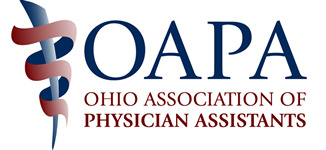Complete Story
01/31/2025
What You Need to Know about OAPA Government Affairs
LEGISLATIVE BASICS
How does a bill become a law in Ohio?
- The definitive source for how state legislation moves in Ohio can be found here: https://www.legislature.ohio.gov/publications/the-legislative-process
What is the Ohio General Assembly?
- It is the legislative branch of the State of Ohio, comprised of the Ohio Senate and the Ohio House of Representatives. The Senate has 33 members and the House has 99 members. The 136th General Assembly began in January 2025 and will conclude in December 2026.
How can I follow pieces of legislation?
- To find legislation, use this search available on the Ohio Legislature's website.
- Selecting a piece of legislation from the search results will display the bill text, sponsors, status, committee activity, proponent and opponent testimony, and more.
- In the top right corner, there will be an option to track the bill. You will need to set up a "My Ohio Legislature" account, if you don't already have one, to use this feature.
What does "lame duck" mean?
- This is a term, when used in reference to the legislative branch of government, to describe the post-election time period where the legislature is finishing up its work prior to the close of the legislative session. There is often a flurry of activity with bills being amended, legislation being combined, etc. The next lame duck period for the Ohio General Assembly will be November-December 2026.
LEGISLATIVE PRIORITIES
What are OAPA's current legislative priorities?
- Advancing the PA title change in Ohio through House Bill 353
- Developing language for a broader PA modernization bill
- Follow the latest on our legislative page
How does OAPA decide what legislative activities to pursue?
- OAPA pursues a mix of short, medium, and long term priorities. There is some legislation that has been on our wish list for many years, whereas other aims are more recently developed. Through a combination of listening to members, analyzing the impact of various activities, and operating within the realities of the Ohio political landscape, OAPA works tirelessly to advocate for Ohio patients and the PA profession.
LEGISLATOR ENGAGEMENT
Who are my legislators?
- Either of these tools will help you find your current representation in the Ohio Statehouse:
- Ohio General Assembly - https://www.legislature.ohio.gov/
- Ohio Secretary of State - https://findmydistrict.ohiosos.gov/
How do I talk to my legislators?
- Share your passion for being a PA alongside the realities of your working conditions. Talk about your education and training, what your day to day experience is like, and what impact existing legislation, or potential future legislation, may have on your work as a PA.
- Your legislators are people too, and more than likely they do not have experience as a medical professional. However, they do have experience as a patient, so use that fact to find common ground.
- Whether you voted for the person or not, you are their constituent, and your voice matters. Presume positive intent that your legislator wants to do well for their community and be a positive voice for the PA profession.
Does political party affiliation matter?
- Promoting quality, accessible, and cost-effective patient care is a non-partisan issue. OAPA works with legislators of all kinds to advance the PA profession for betterment of Ohio patients and for a stronger Ohio healthcare workforce.
Who are key legislators for PA priorities?
- Bill sponsors: Legislators who we partner with to advance legislation on our behalf
- Committee chairs and members: Legislators who lead or are members of health-related committees
- Leadership: Legislators from both parties who are in Senate and House leadership roles
LOBBYING
Does OAPA participate in lobbying?
- Yes, OAPA works with a lobbying firm to conduct lobbying activities. This simply means that OAPA representatives talk to legislators, their staff, people in the executive branch and state agencies, other lobbyists, and stakeholder groups to identify opportunities to advance the PA profession through legislative efforts.
Who are OAPA's lobbyists?
- OAPA is pleased to work with Hicks Partners as our contracted lobbying firm starting in 2025. Please learn more about them in this article.
POLITICAL ACTION COMMITTEE (PAC)
What is a Political Action Committee (PAC)?
- A PAC is an entity that supports or opposes candidates, political parties, or issues. The contributors to a PAC, and the recipients of PAC funds, are public knowledge, searchable here on the Secretary of State website.
Does OAPA have a PAC?
-
Yes, the OAPA PAC is a nonpartisan committee that engages with and provides financial support for candidates and elected officials who help to advance PA practice through legislation that is favorable to the profession. The PAC accepts contributions in any amount (must be individuals who are both OAPA members and U.S. citizens). It has finances that are held separate from OAPA funds.
What does the OAPA PAC do with the money that people contribute?
- The OAPA PAC provides contributions to Ohio legislators who are past, current, or future champions of PA causes or who are otherwise impacting Ohio in positive ways.
Have a question that's not answered here? Please contact us at oapa@ohiopa.com for help!

